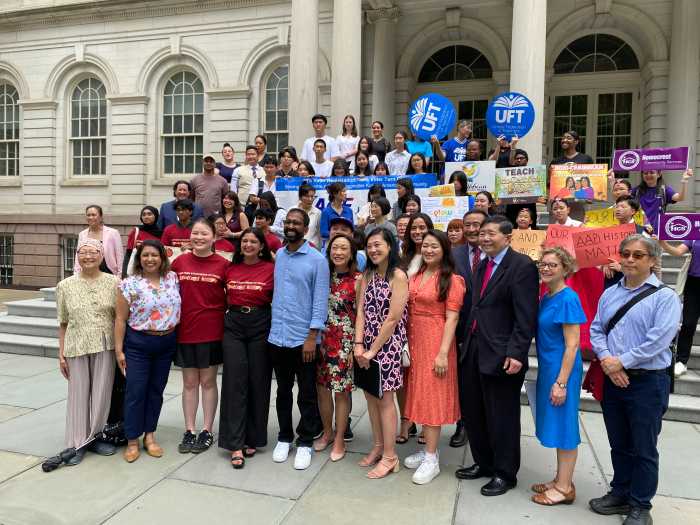By Gary Buiso
It’s hip to be clean, a survey released last week confirmed. The L train, which rumbles through trendy Williamsburg, was rated the cleanest subway line in the city, according to the Straphangers Campaign’s ninth annual ‘shmutz survey.’ The train, which shuttles skinny-jeaned passengers from Williamsburg cross-town in Manhattan, saw significant improvement from just two years ago. Eighty-eight percent of the L train’s cars were rated clean, up from 61 percent two years ago, the survey notes. The Straphangers credited New York City Transit’s new car cleaning initiative on the L and the 7 train—which came in tied for second place with 78 percent of cars clean—for producing a noticeable difference. Late last year, additional cleaners were deployed on both lines, working in shifts to provide 24-hour coverage, the report notes. “Passengers on the L and 7 are riding cleaner cars, thanks to more cleaners and better use of them,” said Gene Russianoff, campaign staff attorney. “We congratulate New York City Transit and hope that riders on the other lines will soon be seeing cleaner subway cars.” The filthiest cars were found to be on the E line, which runs in Queens and Manhattan, and Q, which travels locally in Brooklyn along the Brighton line. Just 29 percent of cars on these trains were found to clean, according to the report. The survey was conducted on 2,200 subway cars on 22 subway lines between Sept. 20 2007 and Jan. 11 2008. Surveyors rated 50 percent of subway cars clean—slightly up from the 47 percent finding in the winter of 2005. The survey found a statistically significant improvement in nine subway lines (2, 7, B, E, G, J/Z, L, M, and V), and deterioration in six lines (3, 4, 6, C, D, and Q). Seven lines remained essentially unchanged (1, 5, A, F, N, R, and W), according to the report. Surveyors use New York City Transit’s official standards for measuring car cleanliness. Cars received a rating of clean if they were “basically dirt free” or had “light dirt” (“occasional ‘ground-in’ spots but generally clean”), the report states. Surveyors did not take litter into account. “We are troubled by the disparities in cleanliness we found, ranging from a low of 29 percent clean cars to a high of 88 percent,” said Cate Contino, the Campaign coordinator who directed the survey. NYC Transit had this to say about the shmutz survey: “While keeping a fleet of 6,200 subway cars spotlessly clean is a difficult challenge, we are pleased to note that the Straphangers Campaign has recognized our efforts along the 7 and L, the two lines that have been the focus of a shift in management philosophy that places a high priority on the customer concerns of cleanliness by making certain that cars are cleaned at both terminals.” The agency said the Straphangers’ methodology differs slightly from that used during Transit’s own in-house evaluations—perhaps explaining why the campaign rated just 50 percent of cars clean overall, and NYC Transit found 87 percent clean. “Importantly, the survey time period is not comparable with NYC Transit’s own Passenger Environment Survey (PES). Our surveys are conducted between 8 a.m. and 10 p.m. on weekdays, while the Straphangers’ survey was performed during the a.m. rush, p.m. rush, evenings, overnights, and weekends,” the agency stated. As examples of contradictions in survey results, the agency pointed out, the E train continues to be the Straphangers’ worst performing line (29%), while the L train is their best performing line (88%). In contrast, the M train is the worst performing PES line (70%) while the 3 train is the best performing line (97%). Although the Straphangers use the same standards as PES, the overall results demonstrate that these indicators are not comparable, given that the PES result was 87% versus 50% for the Straphangers. “The disparities between the Straphangers Report and our in-house surveys notwithstanding, we are working diligently to provide the cleanest equipment for our customers that we possibly can,” said Department of Subways Senior Vice President Steven Feil. “Our decision to move to two-terminal cleaning along certain lines goes a long way towards achieving that goal. Providing a clean environment for our customers is one of New York City Transit’s top goals but our customers can help us out greatly, by properly disposing of their refuse,” added Feil. To read the full report, go to www.straphangers.org.

































